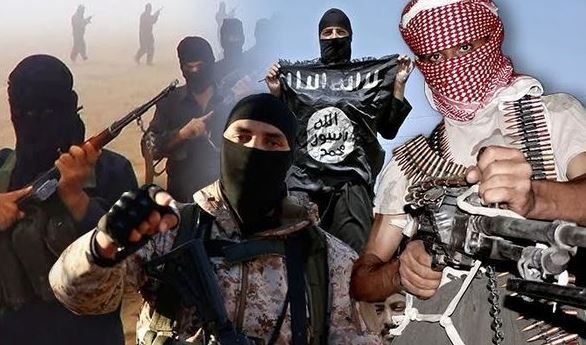
The global jihadist movement is in flux once again, writes Colin Clarke in his new book on what we should expect in the wake of the defeat of Islamic State in Syria earlier this year. “Both Islamic State and al-Qaeda are actively seeking to remain in areas where they are currently strong, while also opportunistically dispersing fighters”, like reported by jpost.com.
This is the problem facing policy-makers across the world and which now poses questions on where ISIS or a group like it will pop up again to carry out horrors we have all gotten too used to. That means more attacks like the assault on churches in Sri Lanka, and continued insurgency in Iraq, among other threats.
Clarke, an assistant teaching professor at Carnegie Mellon University, brings his expertise to this topic in an accessible and timely book, After the Caliphate. He describes ISIS and its “caliphate” which stretched across Iraq and Syria as the apex of the global jihadist movement – “the closest thing it has ever had to a lasting presence.” But now it is reverting to what ISIS and similar groups were before: “decentralized and dispersed clusters of groups and lone individuals or self-starter groups, tenuously linked by ideology and common cause.”
For a book that is about what comes next, Clarke wants to tell us a lot about how we got here. This makes sense in terms of understanding the rise of ISIS, because groups like this don’t rise in a vacuum. Rather, they come from a pedigree of previous religious extremist groups, such as al-Qaeda and its former leader Osama bin Laden. The origins of these kinds of Salafi-jihadist groups can be traced back to various thinkers such as Ibn Taymiyyah or Sayyid Qutb.
The networks of supporters of al-Qaeda were present in 76 countries. Clarke looks at what he describes as a “global jihadist movement” and its operations in places such as Bosnia, Chechnya, Saudi Arabia, Iraq, Algeria and Yemen.
He sketches how ISIS, which grew out of al-Qaeda in Iraq in a complex transition, became a “pioneering terrorist group” through its methods, structure and operations.
In comparison to other groups, ISIS was able to do many things that al-Qaeda or its affiliates had not. This means creating a kind of state structure, waging a conventional war and also carrying out complex attacks abroad. It exploited modern technology very well, either through recruitment, planning or financing. It even used drones.
This sets it apart from the al-Qaeda we remember from the 2000s. Consider that ISIS supporters used platforms like Twitter in 2014, while al-Qaeda sought globalization through technologies like tapes. ISIS also built up its own armories and had an intelligence service that was unparalleled for similar groups.
After the Caliphate is important for understanding whether the next phase of ISIS merely represents a pause, as Clarke hints it might. He enumerates its affiliates and areas where it preys on weak, ungoverned spaces to grow. This means ISIS has set down roots in Sinai, Libya and Afghanistan, and its fighters have gone to other places such as South Asia and Turkey. We may even see ISIS rising in influence in Kashmir and another iteration of it in the Philippines, where it popped up in Marawi in 2017.
Clarke concludes that the ISIS-al-Qaeda relationship is important to determine what comes next. Al-Qaeda may become ascendant as ISIS falters, the author writes.
The future looks bleak.
Although a massive coalition to fight ISIS was created by the international community, many sophisticated Western countries have proved incapable of stopping the growth of extremism or even prosecuting the thousands of their citizens who joined ISIS. Some countries appear to pay lip service to fighting ISIS and other groups, more than actually doing much. That being said, some aspects of intelligence sharing are certainly better than years ago.
But the larger picture seems to be that some countries continue to refuse to acknowledge the unprecedented fact that tens of thousands of people all over the world rushed to join ISIS in 2014. This shows that there is too large a pool of people who are seeking to join genocidal violent religious groups like this. Have we turned the corner, and will the next generation reject these kinds of groups?
How to prevent tens of thousands from joining again is the trillion dollar question, Clarke says. He identifies the Salafi-jihadist ideology that underpins the problem. “It represents the embodiment of Salafi-jihadism and all of its undercurrents – anti-American, anti-Jewish and, of course, anti-Shia.”
We should emphasize a larger goal regarding ISIS. It went beyond al-Qaeda into a genocidal overdrive, cleansing all minorities and systematically murdering and enslaving them in Iraq and Syria. Like the destruction of the Bamiyan Buddhas by the Taliban in 2001, ISIS sought a Nazi-like total extermination and change in Syria and Iraq, destroying thousands of years of history of minority groups in just a few months in 2014.
Maybe we’ve seen the worst of it. But if history tells us anything, it is that this horror will likely rise again somewhere, and we should keep our finger on the pulse of where that might be happening.


